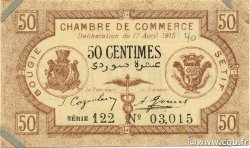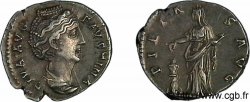v51_0130 - BEOTIA - TEBA Statère
MONNAIES 51 (2011)
Prezzo di inizio : 750.00 €
Valutazione : 1 200.00 €
lotto invenduto
Prezzo di inizio : 750.00 €
Valutazione : 1 200.00 €
lotto invenduto
Tipo : Statère
Data: c. 425-400 AC.
Nome della officina / città: Béotie, Thèbes
Metallo : argento
Diametro : 23 mm
Asse di coniazione : 3 h.
Peso : 12,34 g.
Grado di rarità : R2
Emission: 2e
Commenti sullo stato di conservazione:
Exemplaire sur un flan épais, ovale et irrégulier, décentré au droit. Joli revers avec un carré creux bien marqué, en relief. Patine de collection ancienne avec des reflets mordorés
N° nelle opere di riferimento :
Pedigree :
Cet exemplaire provient de la vente Bourgey du 5 mai 1987, n° 40
Diritto
Titolatura diritto : ANÉPIGRAPHE.
Descrittivo diritto : Bouclier béotien ; les restes d’une massue posée à gauche, timbrée sur le bouclier.
Rovescio
Descrittivo rovescio : Cratère (diota) ; le tout dans les restes d’un carré creux.
Legenda rovescio : Q-E
Traduzione rovescio : (Thèbes).
Commento
Ce type avec les deux premières lettres de l’ethnique serait frappé entre la chute d’Athènes et la paix du grand Roi. Notre type est difficilement identifiable. Nous n’avons pas de symbole dans le champ du revers, en dehors d’une petite cassure de coin, le long de la poignée gauche du cratère. En revanche, les restes de la massue timbrée sur le bouclier ne laisse planer aucun doute sur l’identification du type qui semble beaucoup plus rare que ne le laissent supposer les ouvrages généraux. Au droit, La massue est le symbole d’Héraklès posé sur le bouclier, épisème des Béotiens rappelle les liens qui unissaient le héros à Thèbes. Au revers, le cratère possède deux anses richement ornementées et une panse renflée avec une frise pour décor dans la partie supérieure visible.
This type with the first two letters of the ethnic would have been struck between the fall of Athens and the peace of the great King. Our type is difficult to identify. We have no symbol in the field of the reverse, apart from a small die break, along the left handle of the krater. On the other hand, the remains of the stamped club on the shield leaves no doubt about the identification of the type which seems much rarer than general works suggest. On the obverse, the club is the symbol of Herakles placed on the shield, episema of the Boeotians recalls the links which united the hero to Thebes. On the reverse, the krater has two richly ornamented handles and a swollen belly with a frieze for decoration in the visible upper part
This type with the first two letters of the ethnic would have been struck between the fall of Athens and the peace of the great King. Our type is difficult to identify. We have no symbol in the field of the reverse, apart from a small die break, along the left handle of the krater. On the other hand, the remains of the stamped club on the shield leaves no doubt about the identification of the type which seems much rarer than general works suggest. On the obverse, the club is the symbol of Herakles placed on the shield, episema of the Boeotians recalls the links which united the hero to Thebes. On the reverse, the krater has two richly ornamented handles and a swollen belly with a frieze for decoration in the visible upper part








 Segnalare un errore
Segnalare un errore Stampate la pagina
Stampate la pagina Condividi mia selezione
Condividi mia selezione Fai una domanda
Fai una domanda Consegnare / vendere
Consegnare / vendere










